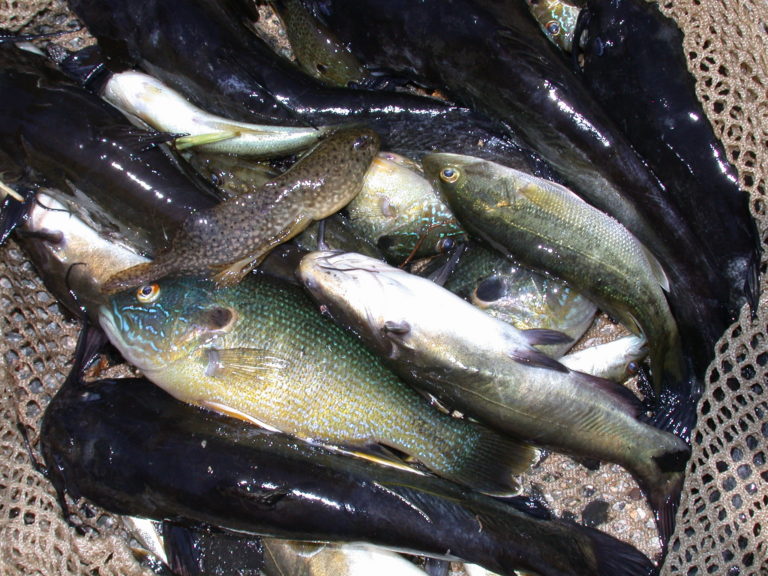

"The river is easy to wade just about everywhere," he said.

Miller's favorite fly on the Situk River is an olive green, size #2, egg-sucking bunny leech. Most people drift yarn balls or glo-bugs with fly tackle."

Pink Plastic worms, nymphs, beads, spinners, streamers-they hit a variety of flies and lures. So many fish on such a small, clear river-the fish crowd in and react to just about everything. The Situk is only 18 miles long, from headwaters to tide waters. "It flows past about 10 miles from town," Miller said. The Situk ambles sedately through flat country in the Tongass National Forest of southeast Alaska. Therefore it has to be one of the top 5 steelhead rivers in all the world." Half of all the steelhead landed by anglers in the entire state of Alaska are caught on the Situk every year. The oldest steelhead ever aged was caught here. "About 5- to 10-percent are that size on the Situk," Miller said. A 46-incher weighs in the rarified 30-pound range. Come again? A 36-inch steelhead might weigh 17 pounds or more. "We see lots of fish in that 36- to 46-inch range." "I like to use a 6-weight fly rod, but most use an 8-weight," Miller said. But the Pacific is their true home, and the region that put steelhead on the map is North America's West Coast.īob Miller owns the Situk River Fly Shop, probably because it places him in close proximity to the biggest run of huge steelhead up any small river on the planet. Lawrence Seaway, and now inhabit a few streams that empty into the Atlantic. Their native range includes Russia, and was extended over 120 years ago to include the Great Lakes. Steelhead are native to watersheds that empty into the Pacific Ocean. Built to shed current and cover water, gleaming across the miles in their silver chain mail, steelhead tell a spectacular story about life on earth. Some traverse a thousand miles of river before their tour of duty ends.Īnadromous rainbow trout, better known as steelhead, are sleek and powerful-beautiful and fascinating. Under dripping redwoods, they mill in green pools. Into forests, deserts, and mountains they come. Sea lice still clinging to their sides, they run into those confined environments and swim uphill. They stage and acclimate to the fresh melt of snow and glaciers. They find ribbons of water that cut canyons through mountains. They come in from the Pacific-the most expansive aquatic environment on earth.


 0 kommentar(er)
0 kommentar(er)
